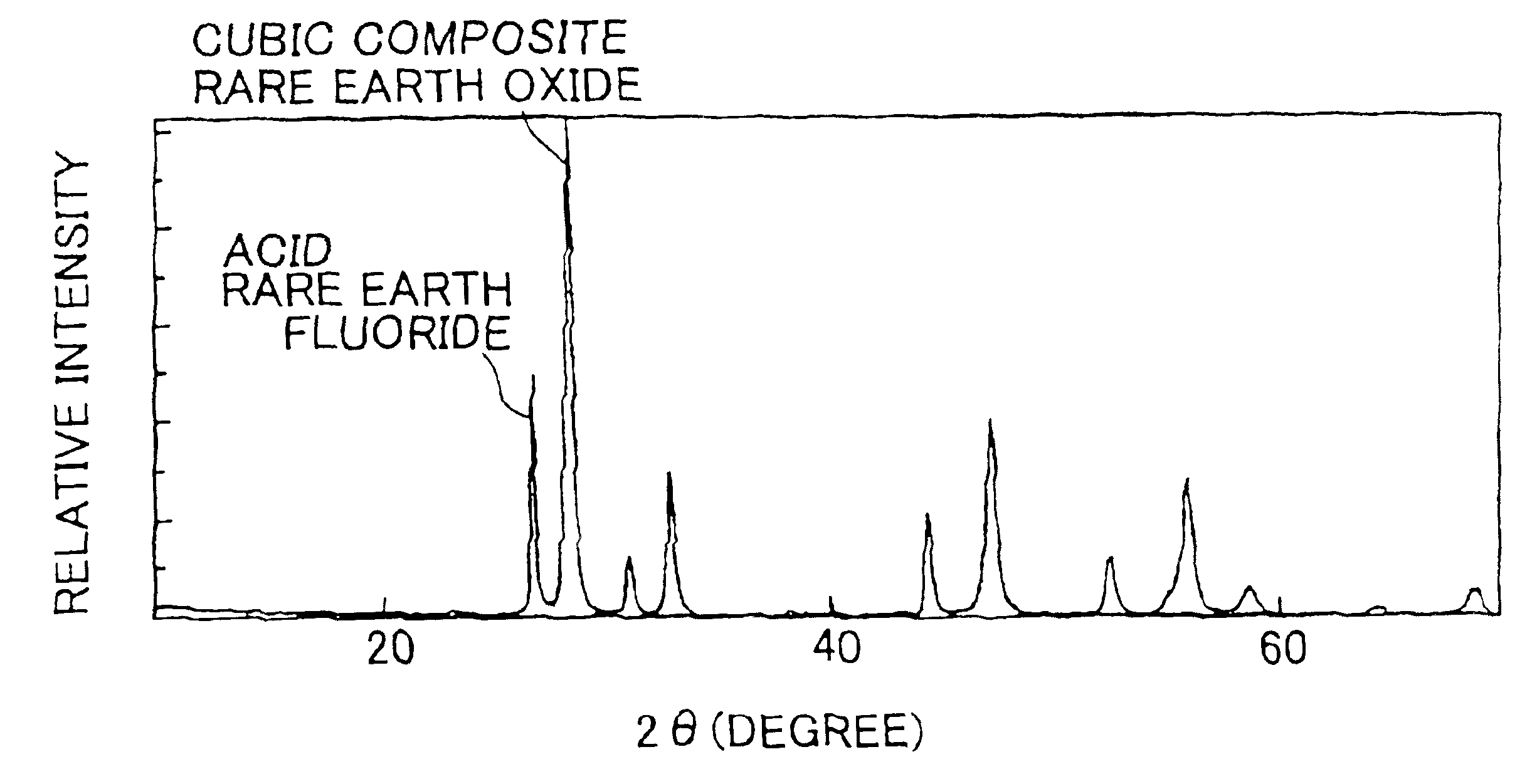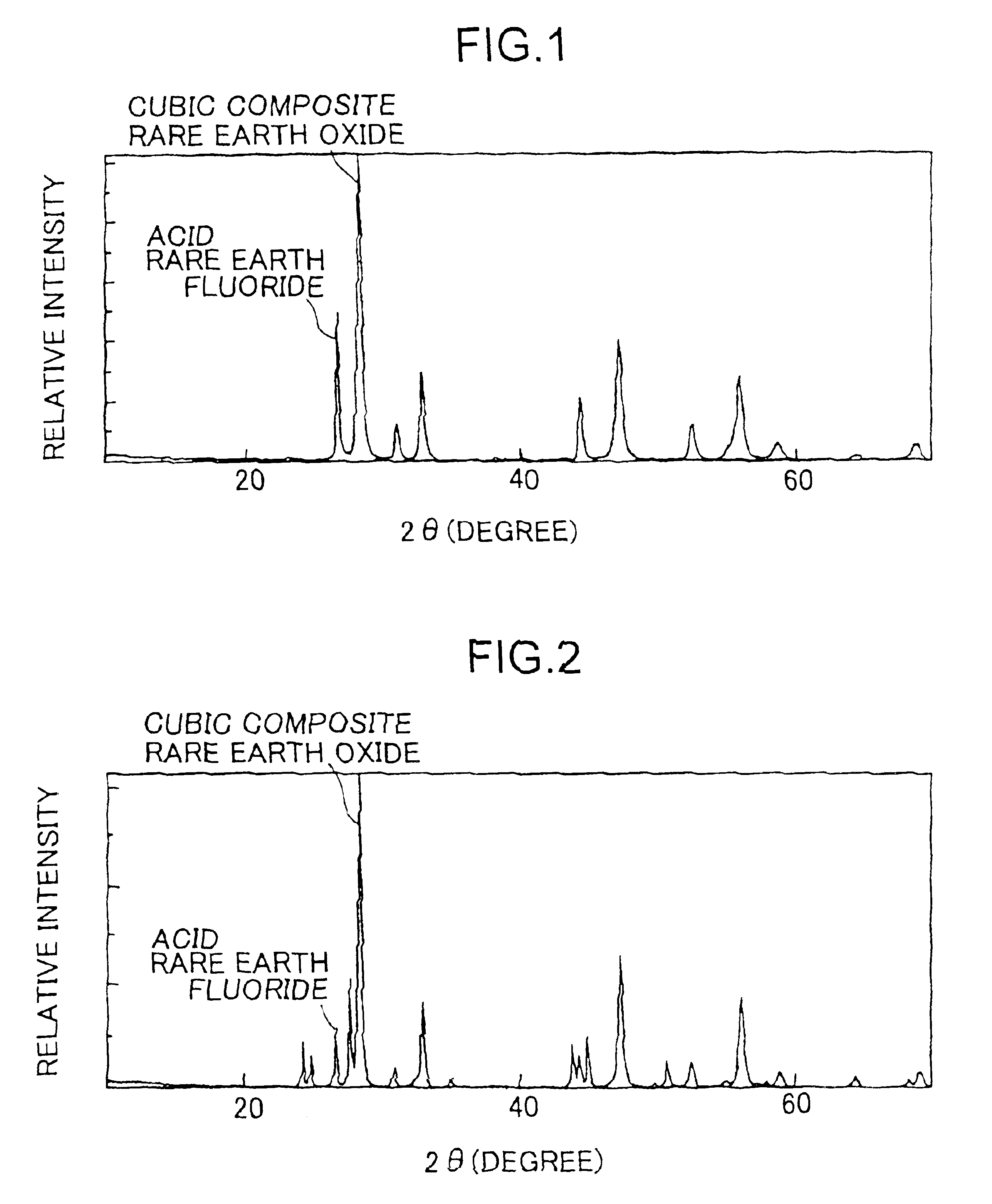Cerium-based abrasive, production process thereof
a technology of abrasives and cerium-based abrasives, which is applied in the direction of polishing compositions, other chemical processes, manufacturing tools, etc., can solve the problems of poor polishing rate, low processing speed, and deterioration of productivity, and achieves small surface roughness and high quality. , the effect of high polishing quality
- Summary
- Abstract
- Description
- Claims
- Application Information
AI Technical Summary
Benefits of technology
Problems solved by technology
Method used
Image
Examples
example 1
[0048]A rare earth concentrate (ore) containing 47 mass % of rare earth elements calculated in terms of oxide, 53 mass % of impurities other than the rare earth elements, 2 mass % of medium-to-heavy rare earth elements calculated in terms of oxide and 8 mass % of Nd calculated in terms of oxide was treated to obtain a mixed light rare earth compound in which the content of the impurities other than the rare earth elements was reduced to not more than 1 mass % and the contents of the medium-to-heavy rare earth elements and Nd were reduced respectively to not more than 1 mass %. The compound was carbonated using ammonium bicarbonate to obtain mixed rare earth carbonate.
[0049]The mixed rare earth carbonate thus produced contained 49 mass % of rare earth elements that contained 60 mass % of cerium, both calculated in terms of oxide. Two liters of the mixed rare earth carbonate was fired in an electric furnace at 800° C. for 2 hours to obtain mixed rare earth oxide. To 1 kg of the mixed ...
example 2
[0061]The procedure of Example 1 was repeated, except that 80 weight parts of mixed rare earth carbonate obtained by carbonating an unfired mixed light rare earth compound with ammonium bicarbonate were substituted for 40 mass parts of the mixed rare earth oxide used as the primary raw material, thereby forming a mixture of the mixed rare earth oxide and the mixed rare earth carbonate to yield a cerium-containing abrasive.
[0062]Polishing was performed by use of the thus-obtained cerium-containing abrasive in a manner similar to that employed in Example 1, and the state of the polished surface was evaluated. The polishing characteristics and physical properties of the abrasive are shown respectively in Tables 1 and 2 below.
PUM
| Property | Measurement | Unit |
|---|---|---|
| 2θ | aaaaa | aaaaa |
| particle size | aaaaa | aaaaa |
| mass % | aaaaa | aaaaa |
Abstract
Description
Claims
Application Information
 Login to View More
Login to View More - R&D
- Intellectual Property
- Life Sciences
- Materials
- Tech Scout
- Unparalleled Data Quality
- Higher Quality Content
- 60% Fewer Hallucinations
Browse by: Latest US Patents, China's latest patents, Technical Efficacy Thesaurus, Application Domain, Technology Topic, Popular Technical Reports.
© 2025 PatSnap. All rights reserved.Legal|Privacy policy|Modern Slavery Act Transparency Statement|Sitemap|About US| Contact US: help@patsnap.com


